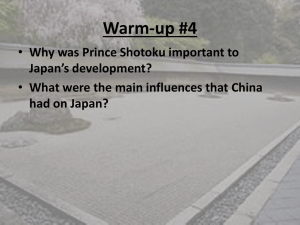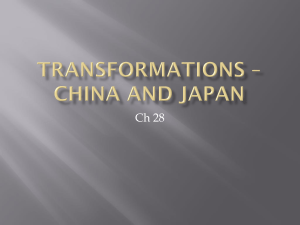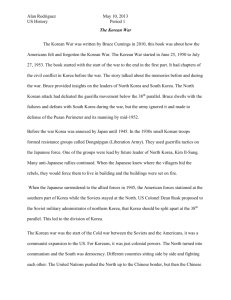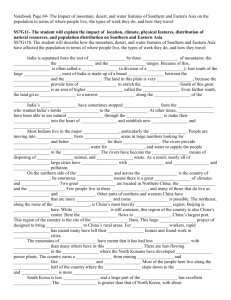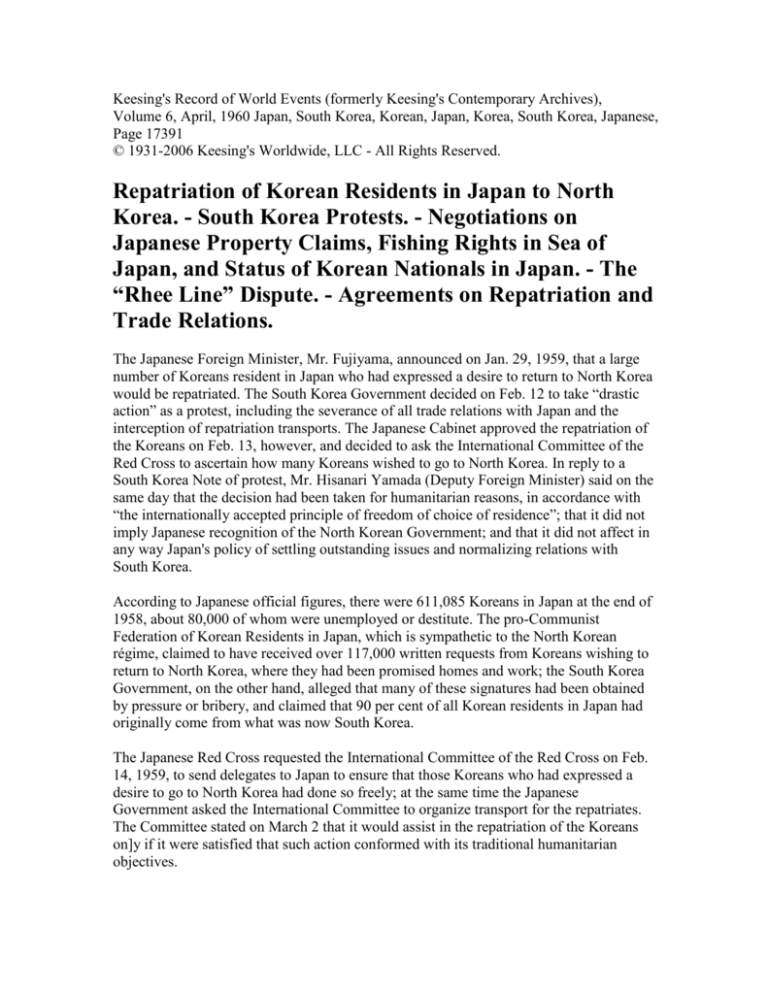
Keesing's Record of World Events (formerly Keesing's Contemporary Archives),
Volume 6, April, 1960 Japan, South Korea, Korean, Japan, Korea, South Korea, Japanese,
Page 17391
© 1931-2006 Keesing's Worldwide, LLC - All Rights Reserved.
Repatriation of Korean Residents in Japan to North
Korea. - South Korea Protests. - Negotiations on
Japanese Property Claims, Fishing Rights in Sea of
Japan, and Status of Korean Nationals in Japan. - The
“Rhee Line” Dispute. - Agreements on Repatriation and
Trade Relations.
The Japanese Foreign Minister, Mr. Fujiyama, announced on Jan. 29, 1959, that a large
number of Koreans resident in Japan who had expressed a desire to return to North Korea
would be repatriated. The South Korea Government decided on Feb. 12 to take “drastic
action” as a protest, including the severance of all trade relations with Japan and the
interception of repatriation transports. The Japanese Cabinet approved the repatriation of
the Koreans on Feb. 13, however, and decided to ask the International Committee of the
Red Cross to ascertain how many Koreans wished to go to North Korea. In reply to a
South Korea Note of protest, Mr. Hisanari Yamada (Deputy Foreign Minister) said on the
same day that the decision had been taken for humanitarian reasons, in accordance with
“the internationally accepted principle of freedom of choice of residence”; that it did not
imply Japanese recognition of the North Korean Government; and that it did not affect in
any way Japan's policy of settling outstanding issues and normalizing relations with
South Korea.
According to Japanese official figures, there were 611,085 Koreans in Japan at the end of
1958, about 80,000 of whom were unemployed or destitute. The pro-Communist
Federation of Korean Residents in Japan, which is sympathetic to the North Korean
régime, claimed to have received over 117,000 written requests from Koreans wishing to
return to North Korea, where they had been promised homes and work; the South Korea
Government, on the other hand, alleged that many of these signatures had been obtained
by pressure or bribery, and claimed that 90 per cent of all Korean residents in Japan had
originally come from what was now South Korea.
The Japanese Red Cross requested the International Committee of the Red Cross on Feb.
14, 1959, to send delegates to Japan to ensure that those Koreans who had expressed a
desire to go to North Korea had done so freely; at the same time the Japanese
Government asked the International Committee to organize transport for the repatriates.
The Committee stated on March 2 that it would assist in the repatriation of the Koreans
on]y if it were satisfied that such action conformed with its traditional humanitarian
objectives.
After prolonged discussions, representatives of the Japanese and North Korean Red Cross
Societies signed an agreement in Calcutta on Aug. 13, 1959, providing that applications
for repatriation should be submitted to the Japanese Red Cross, which would request the
International Committee to “take such measures as the latter deems necessary and
appropriate to ensure that the organization and operation of the system for registering
persons wishing to return is fair, impartial, and in conformity with humanitarian
principles.” The International Committee had announced on Aug. 11 that it would assist
in the repatriation of the Koreans, based on the principle of freedom of choice of
residence.
The Communist authorities in North Korea subsequently refused to co-operate,
demanding that the rules framed by the International Committee in its “repatriation
manual” should be amended to provide for the “screening” in family groups of those
opting for repatriation, instead of individually as had been intended. Despite strong South
Korea protests and allegations of “coercion” of repatriates, the International Red Cross
Committee eventually agreed to the change desired by North Korea, but insisted on the
observance of the following principles: (i) repatriation should be on a strictly individual
and voluntary basis; (ii) each intending repatriate should be fully informed of the free
choice open to him either to remain in Japan or to go to either part of Korea; (iii) no
pressure whatsoever should be brought to bear on the Koreans involved in the course of
the registration or repatriation operations; (iv) each Korean involved should be allowed to
consult the representatives of the Japanese Red Cross and the International Red Cross
Committee. The International Red Cross had previously given a warning that it would
withdraw from the repatriation process if it was proved (as alleged by South Korea) that
collective political pressure was being applied to carry out the programme.
Repatriation actually began on Dec. 14, 1959, when a first group of 975 Koreans (out of
over 5,000 who had registered) sailed from the Japanese port of Niigata in two Soviet
ships chartered by the North Korean Government; three more transports, each carrying
nearly 1,000 people, followed on Dec. 21, Dec. 28, and Jan. 15, 1960, by which time a
total of 3,937 Koreans, representing 999 households, had left Japan for North Korea.
Although the South Korea Government had placed its armed forces on an alert footing
and cancelled all leave, no attempt was made to intercept the transports. A South Korea
proposal that the repatriation question should be referred to the International Court of
Justice was rejected by the Japanese Government on Dec. 18. The South Korea Foreign
Minister, Mr. Cho Chung Whan, tendered his resignation to President Rhee on the same
day, in view of his failure to prevent the repatriation.
Prior to the repatriation controversy, relations between Japan and South Korea had
already been severely strained for several years as a result of disputes over Japanese
assets in Korea, fishing rights in the Sea of Japan, and the status of Korean nationals
living in Japan.
Formal talks had opened as far back as 1952 on the following questions: (1)
establishment of diplomatic relations; (2) property and claims; (3) fisheries; (4)
nationality and treatment of Korean nationals residing in Japan; (5) and shipping.
Although some progress was made on the other questions, the negotiations broke down
because of basic differences over property claims and fisheries. On the property question
the South Korea delegation, basing its claims on Article 4 of the San Francisco Treaty
[see 11681 A], claimed the right to confiscate as reparations all Japanese property in
Korea, public and private. The Japanese delegation, however, maintained that Japanese
private assets in Korea belonged to the owners of the original title, and that the question
should be settled by discussion on a case-by-case basis.
Shortly before the opening of the negotiations, the South Korea Government had
unilaterally proclaimed the so-called “Rhee Line” on Jan. 18, 1952, with the aim of
protecting Korean fisheries. This line (which runs 60 nautical miles on an average from
the Korean coast, and 170 miles at its farthest point) excludes Japanese fishermen from
some of the richest fishing grounds in the Sea of Japan, and has not been recognized by
Japan or any other country. A Japanese proposal for the joint conservation of fisheries
was rejected by the South Korea delegation, and in consequence the talks were suspended
on April 25, 1952.
Negotiations were reopened on April 15, 1953, but after a six-month adjournment were
virtually suspended until 1956. The principal matters preventing their resumption were:
(1) The seizure by the South Korea authorities of Japanese fishing boats found inside or
in the vicinity of the “Rhee Line,” their crews being sentenced to imprisonment. This
practice, which started in September 1953, reached a climax in August 1955, when
during the single week Aug. 3-9 eleven Japanese vessels with 266 men on board were
seized by the South Korea authorities and four more fired on. A Japanese statement (Aug.
18, 1955) said that 542 Japanese fishermen taken from 102 ships were then being
detained in South Korea, and alleged that they were confined in filthy and overcrowded
prisons, fed on bad food, and subjected to rigorous discipline.
In reply to appeals by the fishing industry, the Director of the Japanese Defence Board
(then Mr. Sunada) stated on Oct. 18, 1955, that he was prepared, if instructed, to order
out the Navy; in reply, the South Korea Joint Chiefs of Staff announced on Nov. 17, 1955,
that Korean patrol boats would fire on and if necessary sink Japanese fishing vessels
crossing the “Rhee Line.” The Japanese Cabinet decided on Dec. 8, 1955, however, to
refrain from sending armed patrol boats to protect Japanese fishing vessels, for fear of
aggravating the tension between the two countries, and to seek U.S. co-operation in
reaching a settlement with South Korea.
(2) South Korea claims to the Takeshimas, a group of uninhabited rocky islands about
half-way between Japan and Korea, which are used by fishermen of both countries. The
islands had been part of Japanese metropolitan territory since the annexation of Korea in
1905, and the fact that they were not mentioned in the San Francisco Treaty was
interpreted by Japan as a recognition of her claim. In July 1954, however, a South Korea
military force occupied the islands, which fall inside the “Rhee Line,” and in August
1954 a Japanese patrol boat sent to investigate was fired on. A Japanese proposal that the
question should be referred to the International Court was rejected by South Korea in
October 1954.
(3) South Korea resentment at the opening in 1955 of Japanese-Soviet negotiations and at
the conclusion of an unofficial trade agreement between Japan and Communist China
[see 14214 B; 15195 A], coupled with fears that Japan might accept a North Korean
proposal for the-establishment of economic and cultural relations. A South Korea
Government spokesman declared on Aug. 17, 1955, that relations with Japan were
“reaching breaking point,” and alleged that “the Japanese continue to seek to tie up with
Communism and at the same time refuse to withdraw their illegal claim to 85 per cent of
Korean property.” On the same day the South Korea Government suspended trade
relations with Japan and banned all travel between the two countries.
The Japanese Foreign Ministry declared on Sept. 20, 1955, that Charges to the effect that
Japan had established claims for 85 per cent of all property of the Republic of Korea were
“either outright propaganda” or “based on gross misunderstanding.” As regards relations
with North Korea, the statement said that the Japanese Government had actually
prohibited trade and visits between the two countries and had given “top priority” to
improving and normalizing relations with South Korea. Commercial relations between
the two countries were subsequently resumed.
(4) The status of Koreans resident in Japan since before 1945 (i.e. the end of the Second
World War) who had been found guilty of criminal offences and whom the Japanese
Government wished to deport to Korea. Following the suspension of negotiations in April
1952, the South Korea Government refused to accept any such Koreans, who were in
consequence detained by the Japanese authorities after the completion of their sentences.
A South Korea demand for their release in July 1954 was rejected by Japan, whereupon
the South Korea authorities began detaining Japanese fishermen after the completion of
their sentences; at the same time they refused to accept Koreans deported by Japan as
illegal immigrants, although they had previously agreed to accept such persons.
Eventually an agreement was signed in Tokio on Dec. 31, 1957, whereby 850 Japanese
fishermen who had completed their sentences would be sent back to Japan; 100 more
would be sent back on completing their sentences; 460 Koreans detained in Japan who
had lived there before 1945 would be released and allowed to remain in Japan; and 1,100
illegal immigrants would be deported to Korea. It was also agreed that formal
negotiations on the establishment of normal diplomatic relations, trade, fisheries, and
problems concerning Koreans in Japan should begin in Tokio on March 1, 1958. The
progress of the negotiations, however, was again hampered by South Korea's refusal to
make concessions on the “Rhee Line,” and the continued seizure of Japanese fishing
boats and their crews –12 vessels and 124 fishermen being detained between January
1958 and February 1959.
As a protest against the Japanese decision on the repatriation question, the South Korea
Government announced on Feb. 12, 1959, that it would adjourn the negotiations sine die,
defend the “Rhee Line” by force, and seize all vessels violating it, whilst on June 15,
1959, it broke off all trade exchanges with Japan. Negotiations were resumed in August,
however, and after various adjournments resulted in the conclusion of an agreement on
March 18, 1960, providing for the mutual release and repatriation of detainees. In
consequence, 167 Japanese fishermen who had been released from Korean prisons after
serving their sentences but were still detained in Pusan were sent home by the Korean
authorities on March 31, 1960, while 687 Koreans who had been held as illegal
immigrants in Japan were repatriated at the same time. The Korean authorities also
agreed in principle to return in due course another 54 Japanese fishermen on completion
of their sentences, whilst Japan undertook to return another 500 illegal Korean
immigrants when the fishermen were released.
The resulting relaxation of tension between the two countries led to an agreement on
April 4, 1960, to resume full trade relations immediately and to reopen negotiations on
the establishment of diplomatic relations. It was also agreed that a conference would open
on the following day in Tokio to work out details for the proposed Japanese purchase of
30,000 tons of rice from South Korea and for an increase in Japanese imports of other
Korean products.–(Japanese and South Korea Embassies, Press Offices, London - Korean
Republic, Seoul New York Times - New York Herald Tribune - Times)
© 1931- 2008 Keesing's Worldwide, LLC - All Rights Reserved.



